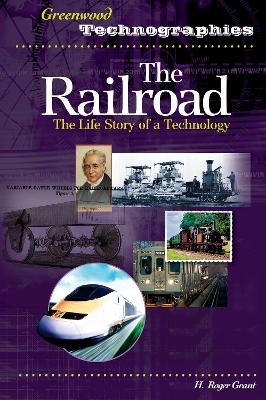Greenwood Technographies
2 total works
Railroads altered the landscape of the United States. Within a few decades of the invention of the locomotive, railways stretched from coast to coast, enabling people and goods to travel far greater distances than ever before, completely altering our concept of time and space. And while railroads may seem like an old technology, they continue to be an essential means of transporting both good and people, and new technologies are making the railroads an increasingly relevant resource for the 21st century. This volume in the Greenwood Technographies series tells the life story of all aspects of railroad technology-everything from the structure of the track to communications to what powers the locomotive.
The Railroad: The Life Story of a Technology gives students and railroad enthusiasts plenty of information on the development of this popular technology:
; Chronicles the early years of the railroad, from early wooden tramways in Massachusetts, to the famous Tom Thumb
; Discusses the important technological failures, such as the narrow-gauge craze of the late nineteenth century with track widths as small as two feet.
; Covers all aspects of railroad technology - everything from the structure of the track to communications to what powers the locomotive.
; Links the technology to broader social developments, such as the decline of the railroad in the mid-20th century to outmoded governmental and labor restrictions, and the current rise of railroad technology as a result of new managerial techniques.
The volume includes a timeline of important dates in railroad history, a glossary of important terms, and a selected bibliography of works appropriate for further research.

